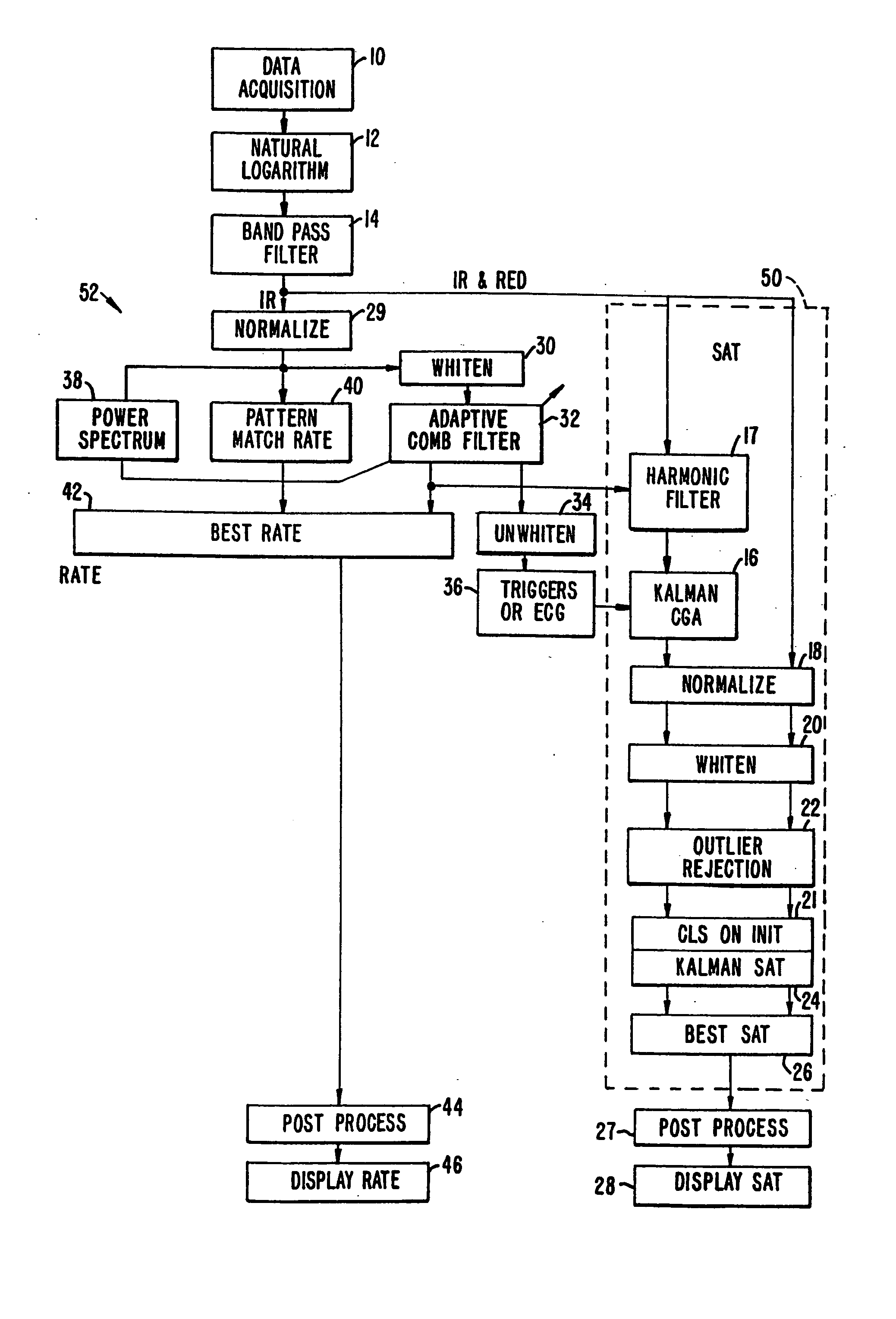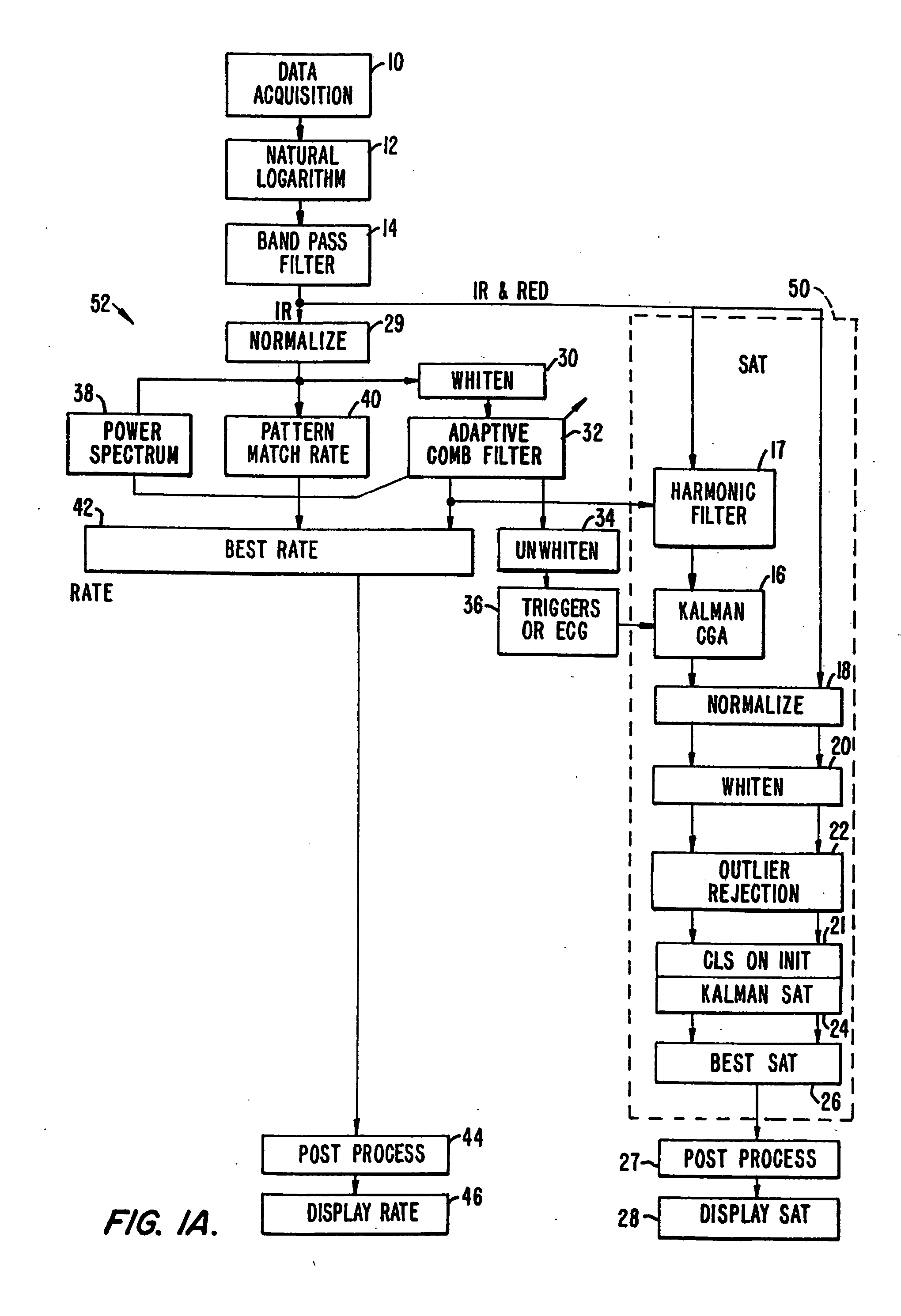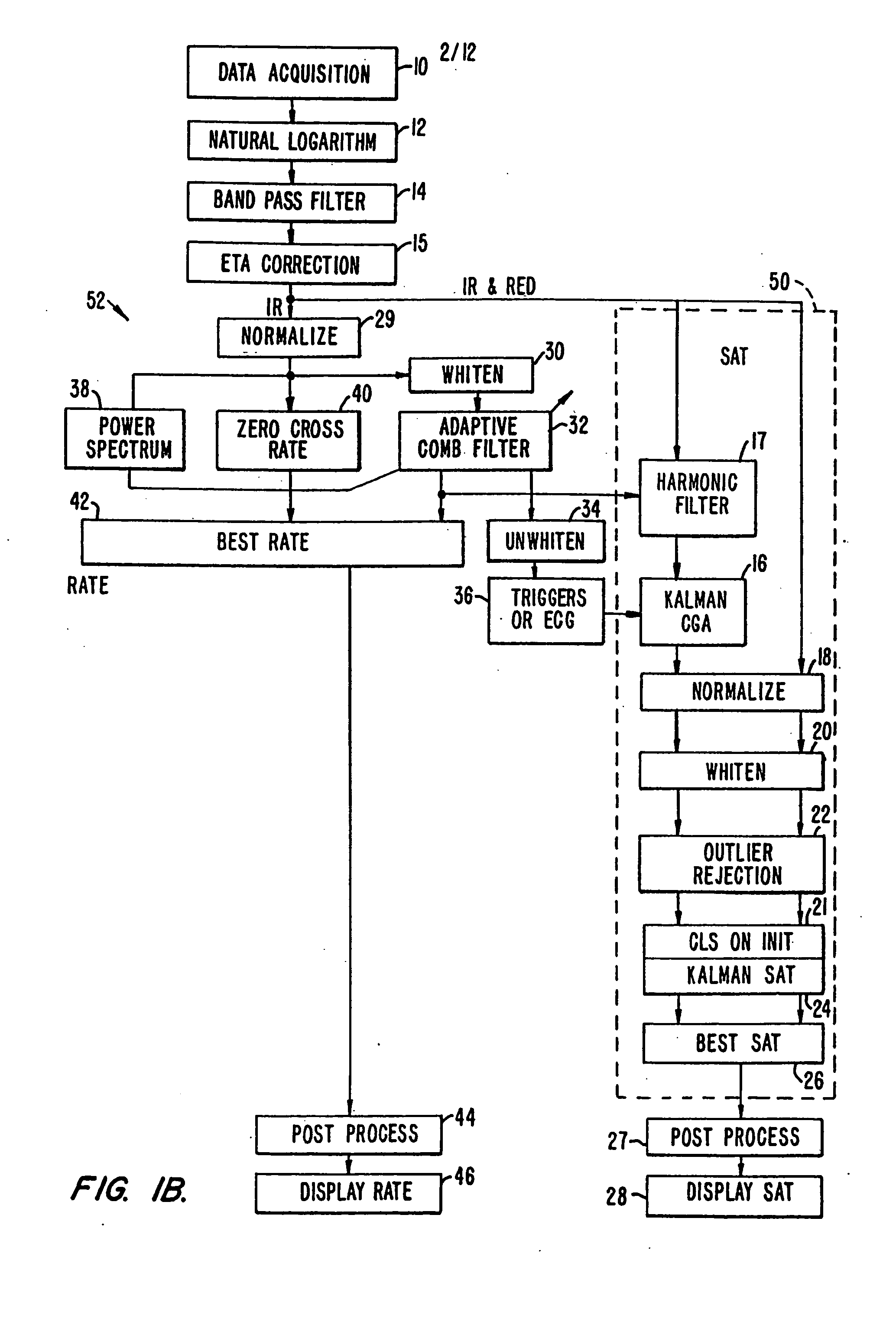Method and apparatus for estimating a physiological parameter
a physiological parameter and method technology, applied in the field of physiological parameter estimation methods and apparatuses, can solve the problems of poor heart rate finder of acf, and achieve the effect of optimally estimating physiological parameters and reducing the effects of motion artifact and nois
- Summary
- Abstract
- Description
- Claims
- Application Information
AI Technical Summary
Benefits of technology
Problems solved by technology
Method used
Image
Examples
Embodiment Construction
[0040]FIG. 1a shows the flow of data according to one embodiment of the present invention. A separate platform collects the oximetry data (step 10) and passes it to processors 50 and 52 of the present invention. A preferred platform is described in U.S. Pat. No. 5,348,004 assigned to Nellcor, the entire disclosure of which is incorporated herein by reference. The data is first pre-processed (steps 12 and 14), and is then passed to a saturation calculation algorithm (box 50). The algorithm described herein employs an improved Kalman filter method (step 24). It will be understood that other saturation calculation techniques may be employed. The pulse rate calculation method (box 52) and a cardiac gated averaging technique also using a Kalman filter (step 16) are discussed below.
[0041] According to a preferred embodiment, the processing technique employs the following pre-processing. The natural logarithm of the IR and Red wavelength data is taken (step 12), and then the data is band ...
PUM
 Login to View More
Login to View More Abstract
Description
Claims
Application Information
 Login to View More
Login to View More - R&D
- Intellectual Property
- Life Sciences
- Materials
- Tech Scout
- Unparalleled Data Quality
- Higher Quality Content
- 60% Fewer Hallucinations
Browse by: Latest US Patents, China's latest patents, Technical Efficacy Thesaurus, Application Domain, Technology Topic, Popular Technical Reports.
© 2025 PatSnap. All rights reserved.Legal|Privacy policy|Modern Slavery Act Transparency Statement|Sitemap|About US| Contact US: help@patsnap.com



